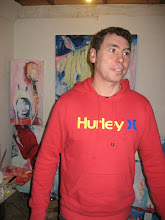HOW CAN ART BE RELEVANT POLITICALLY?
Jean Fisher, ‘Toward a Metaphysics of Shit’ from Documenta 11 Platform 5 The Catalog, Ostfildern-Ruit: Hatje Cantz, 2002
Jean Fisher was born in America and studied Fine Art. She has written extensively about art. She currently lectures in Art and Art Theory at Middlesex University and the Royal College of Art, London.
This writing is from the Documenta 11 catalogue. A contemporary art event in Kassel, Germany held every five years since 1955.
Fisher points out that the arts are part of the capitalist global economy. She asks how the artist can operate within this economy and continue to be creative. What can art change?
Is it possible to capitalize on globalization? Through biennials and other art events can artists present new and unconventional ideas?
Again we are introduced to the trickster. The trickster appears in most culture of the world. Maui is the trickster from New Zealand and the Pacific. Fisher refers to him through Native American stories. The trickster in these stories ‘usually fails to achieve his aim, but gains insight (68).’ The stories do not offer an answer but instead give the reader something to ponder. The trickster is a lie that leads to truth.
The problem for art is how to present new ideas in such a way that the meaning is not lost on the viewer, to be critical and playful at the same time.
The aim with art is to be shocking but present the shocking aspect as comfortably familiar. De-familiarization can be called the tricksters’ magic. We recall the trickster Maui who ‘was given special gifts from the ocean and sea, gifts of shape-shifting and transformation,’1. The trickster also acts as a mediator and translator.
De-familiarization can be seen repeatedly in contemporary art. Often an artist will combine ideas, materials and techniques in new ways. The trick is to present the viewer with questions rather than assume authority and provide answers.
1. Natalie Robertson, ‘The 10 predicaments of Maui: notes on tricksters’, Brian Butler ed., Volume 1, Auckland: Artspace& Clouds, 2008, pp 18
Subscribe to:
Post Comments (Atom)


No comments:
Post a Comment